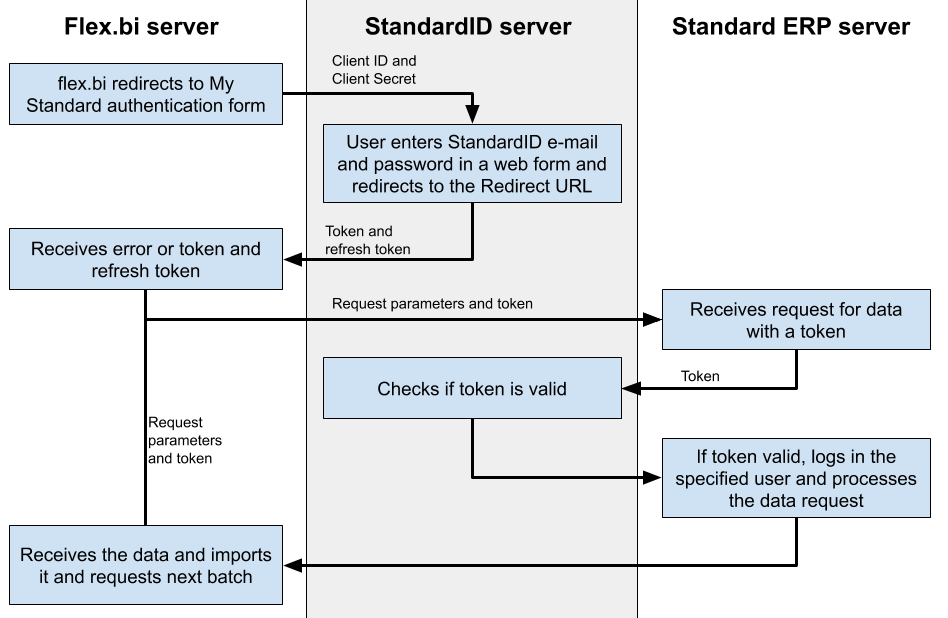...
There are three parties involved in each OAuth authentication process - the flex.bi server requesting data, StandardID server authenticating the user (StandardID) and the Standard ERP server serving the data. The image below has a separate column for each of these servers and the respective actions.
Notes to the flow:
If the supplied Standard ID and password is not correct you will receive an error on the StandardID server (without redirect to flex.bi):
Info Access type must be 'offline' and response type must be 'code'
If the supplied Client ID, Client Secret or redirect URL are not correct you might get various error messages such as:
Info Source application did not authorize your request
- Each token issued by StandardID server has an expiration time. If the token expires then flex.bi will request a new one using the supplied refresh token
- In case of any issues with the process please try to enable REST API on SERP server with basic HTTP authentication and get some data directly in your browser as described in the REST API 2.0 setup guide step 4.
If the supplied StandardID user and password were correct, but did not have access to the REST API or the specific register you will receive errors such as:
Info Source application did not authorize your request. Please check your authentication information.
or
Info Received HTTP 405 error when requesting
- If anything fails in the authentication or data request process (such as no access rights or Standard ERP server is not reachable) process will start from step 1 again - asking for StandardID and password
Connectivity requirements:
- flex.bi Redirect URL has to be accessible from the internet so that StandardID server can access it
- Standard ERP server has to be able to reach StandardID server to check token and this is supported only over HTTPs connection
...
